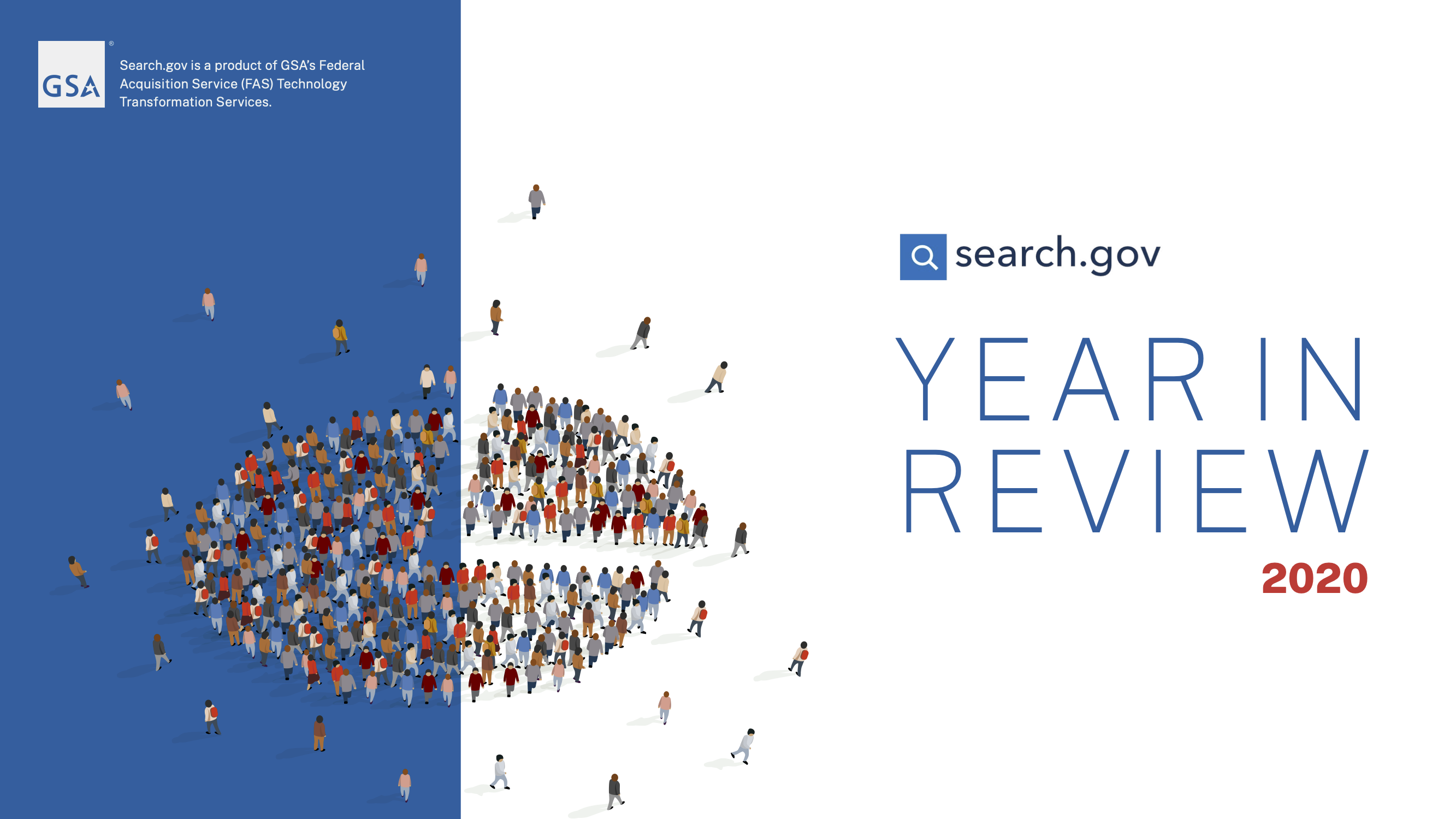2020 in Review
320,581,805 queries
~ 2,200 websites
20 top topics
365 days of connecting people with what they need
Search.gov is a search engine service provided by the GSA’s Technology Transformation Services. Used by one-third of federal domains, it provides a high-quality, standard search experience for the public as they interact with different government websites. The service’s broad use also gives insight into not only what services and information the public needs, but how people seek it out. Often, web analytics just show what resources people used. Search data shows why people went to get those resources.
This Annual Review explores the top needs of 2020, expressed in the public’s own words.
A Year Like No Other
Between the COVID-19 pandemic, social unrest, and environmental emergencies, 2020 was truly an extraordinary year. In a typical year, search traffic to federal websites follows predictable patterns. For most agencies, the public comes searching for information at a fairly steady rate, with surges ahead of deadlines, such as for applications for benefits or grants. Similarly, we see the same topics in roughly the same order, looking at how frequently each topic gets searched for.
The COVID-19 pandemic changed search patterns and volume significantly. Some topics, like loan forgiveness, saw as high as a 500% increase in volume, while others dropped dramatically. The Trusted Traveler Programs, on the other hand, got 90% fewer queries in 2020 compared to 2019. Forms, usually one of the top needs, saw a steady level of demand but still dropped to 5th place in 2020 due to other emergent needs.
Governmentwide window to public experience
Search.gov’s broad use in government gives us a bird’s eye view of public behavior in search, no matter what website a person may have gone to. We see categories of need that link different topics together, as well. Examples include learning about benefits and services, applying for those benefits and services, discovering where they are in the application process, receiving the benefits and services, and maintaining the connection to the benefit or service over time.
In 2020, we saw clear need for COVID-19 information, ranging from ways to stay healthy to vaccines to stimulus payments. However, of the more than 9.6 million COVID-19-related searches we responded to in 2020, we consistently saw 22% were run simply as “covid,” “covid-19,” or “coronavirus.” We see these sorts of highly complex needs are often expressed in very vague terms.
We can see trends in challenges as well. For instance, 25% of people search for forms just using the word “form” or “forms.” This shows that, regardless of agency, a significant portion of the public doesn’t know what form they may need, or if they do, they’re not asking for it specifically and are likely to run into challenges in locating the correct form.
Since we don’t track individual searchers, we cannot show a complete journey from beginning to end. However, the themes and trends provide government with a considerable amount of information to improve the public experience with navigating government information.
Methods
The Search.gov system collects unsampled data about search traffic through our service. It allows us to see what searches were run on any participating websites. We’re also able to see what webpages people were on when they ran their searches, and what they clicked on from the search results page. We do not track individual people.
For this report, we used an analysis method designed to detect the topic of the search from any of these data points: the search term, the URL of the selected search result, the website being searched, or the webpage being searched from. For example, a person searching for an application form may use the word “forms” or they may search using a specific form name, but select a search result from the website’s forms folder. We also considered how different searchers may use different words to talk about the same idea, such as “lost green card” or “i-90,” the USCIS form number to apply for a replacement green card.
The time frame studied was January 1 – December 31, 2020.
Read our 2020 system highlights, an overview of the biggest improvements we made to our system last year.

